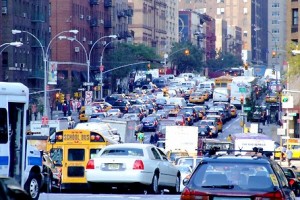The growth of the U.S. auto industry closely coincided with another dramatic change in the American landscape, the move by tens of millions of Americans from cities to suburbs.
But newly-released U.S. census data show that, for the first time in a century, cities are growing faster than surrounding suburbs. And that, tied to other demographic and psychographic trends could pose potentially serious challenges to automakers desperately seeking further growth.
The shift back to urban living is largely being led by the so-called Millennial generation, and research is finding that members of Gen-Y are also far less interested in owning or driving automobiles than those from previous generations who led the tract home migration.
“There’s a bigger focus on building residences near transportation hubs, such as a train or subway station, because fewer people want to travel by car for an hour and a half for work anymore,” Royal Shepard, an analyst with S&P Capital IQ in New York, who tracks the residential and commercial real estate market, told the Associated Press.
It’s something of a chicken-and-egg situation trying to figure out whether the auto industry led to the building of suburbs or the other way around but it’s indisputable that they went hand-in-hand, and that the major migration coincided with such significant automotive events as Henry Ford’s launch of his first moving assembly line.
Other factors kicked in after World War II, including the development of new tract home construction methods, as well as various benefits offered to returning GIs, such as education and mortgage benefits. But perhaps nothing opened the floodgates more effectively than the Interstate Highway program, which allowed American workers to drive to urban job centers in the morning and return to their suburban spreads at the end of the workday.
The suburbs aren’t about to shrink away. Preliminary studies of census data by the Brookings Institution and the Federal Reserve show the population growing 1.1% annually in central cities and 0.9% in surrounding communities. But that is a significant shift from a trend many demographers had suggested was never going to reverse just a few years ago as developers pressed further and further out into the countryside before the collapse of the American housing market.
Of course, trends have a way of shifting. An unexpected recovery of the housing market could revive suburban growth, but most forecasts indicate that Millennials will be the first generation of Americans to see a decline in their standard of living, which could lead more to rent than buy, itself a major shift.
Meanwhile, even among those younger Americans who stay in the suburbs there is an increasingly apparent shift in mindset when it comes to the automobile.
Many fall into a category of “new drivers who are really not even interested in getting a license,” according to John Hoffecker, a managing partner with the Detroit financial advisory firm AlixPartners.
Some studies find that those now coming of age are six times less likely to rush out and get a driver’s license as Baby Boomers did at a similar age. Other data indicate that Millennials are less likely to buy or lease automobiles – whether because they don’t want them or simply can’t afford them.
A shift into urban centers offering mass transportation appears to also be playing a role. Most American cities began scaling back on rail and other mass transit systems as the auto industry began its ascendance but more and more urban centers, such as Seattle, are now adding rail and bus systems – while also expanding bike and pedestrian routes. Even New York City, home to the country’s most extensive mass transit system, is blocking out more areas where cars are banned.
“It’s a big challenge,” said Clay Dean, head of advanced research for General Motors, during a conversation with TheDetroitBureau.com earlier this year.
Like its competitors, GM is looking for ways to appeal to auto-phobic consumers. It unveiled several concept vehicles pitched directly to Millennials earlier this year, including the Code 130-R. It also is toying with a concept called EN-V 2.0, a rickshaw-like contraption that is powered by electric motors.
It’s not alone. BMW is one of many makers betting that the Millennial generation’s focus on the environment is limiting interest in traditional, gas-powered automobiles. The maker will soon launch a line of battery-based models, such as the i3 and i8, through an entirely new sales channel.
But urban residents are also discovering other alternatives. Car-sharing programs are rapidly expanding across the country and offer city-dwellers access to a set of wheels when they need them – without the hassle of maintenance or the need to have a garage.
Whether such trends will continue to cut into the automobile’s long appeal – or whether young buyers will return to more traditional housing and car buying patterns as they age — remains to be seen

